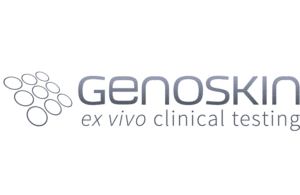 “How do you maintain human skin alive so that you can generate data from what would otherwise be trash?” asked Eric Merle, chief business innovation officer of Salem, Massachusetts–based Genoskin. “We work with surgical discards.”
“How do you maintain human skin alive so that you can generate data from what would otherwise be trash?” asked Eric Merle, chief business innovation officer of Salem, Massachusetts–based Genoskin. “We work with surgical discards.”
Founded a decade ago, Genoskin collects human skins from cosmetic surgeries such as face-lifts and abdominal surgeries that would otherwise be waste to foster research on new drugs and cosmetics.
“Many people worldwide are undergoing plastic surgery, yielding tissue,” Merle said.
Keeping the skin preserved requires “pretty tight logistics,” Merle said. “We have the logistics of an organ transplant company.”

The MANTIS spatial biology imaging platform for skin immunology. Image courtesy of Genoskin.
The resultant skin models preserve the characteristics of real human skin.
The company has a variety of product types. One is HypoSkin, an alternative to animal testing for subcutaneous injections. In addition, its NativeSkin human skin models preserve normal skin barrier function of in vivo human skin. Another one of its products is InflammaSkin model, an ex vivo human psoriasis model T cell-driven with a Th17/Th1 phenotype. Genoskin also offers an injectable site reactions platform.
Rounding out its offerings is its latest offering, MANTIS, which offers automated analysis of more than 12 markers in a single acquisition, coupled with deep learning-based computational imaging.
Named after the mantis shrimp, MANTIS is also an abbreviation for Multiplex ANnotated Tissue Imaging System.
MANTIS supports 3D imaging of skin and immune cells.
Genoskin counts companies such as GSK, Sanofi, Leo Pharma and Pfizer as customers.

Eric Merle
The FDA recently invited the company to demonstrate how its skin-based models could determine the toxicity of compounds.
Its offerings also provide an alternative to animal testing. “We can maintain human skin in an immunocompetent survival state with the ability to inject into it,” he said.
The company’s offerings remain unique in the marketplace, Merle said. “We’ve had a very strong IP effort,” Merle said. “Last year, we filed a patent on a biofluidic platform that connects tissue to microfluidics.”
Still, there is indirect competition from companies specializing in areas such as bioprinting, virtual clinical trials and animal testing.
“But there are not that many actors in skin itself, actually,” Merle said. “Yet skin is our largest organ. It’s the biggest indicator of what’s happening in your body.”
Genoskin also hopes to play an instrumental role in the pharmaceutical industry’s gradual transition from animal testing. In 2019, the EPA signaled its intent to eliminate mammal testing by 2035.
Earlier this year, Senators Rand Paul (R-Ky.) and Corey Booker (D-N.J.) introduced a bill known as the FDA Modernization Act that would end FDA’s animal testing mandates.
Large pharmaceutical companies are making similar long-term plans. Genoskin has had “very advanced discussions with big pharmaceutical partners,” Merle said.
“Animal testing dates back to the 1950s. It is not a very old part of the drug development process,” Merle said. “As better solutions for drug development and prediction of efficacy in humans come up, people will adopt those.”